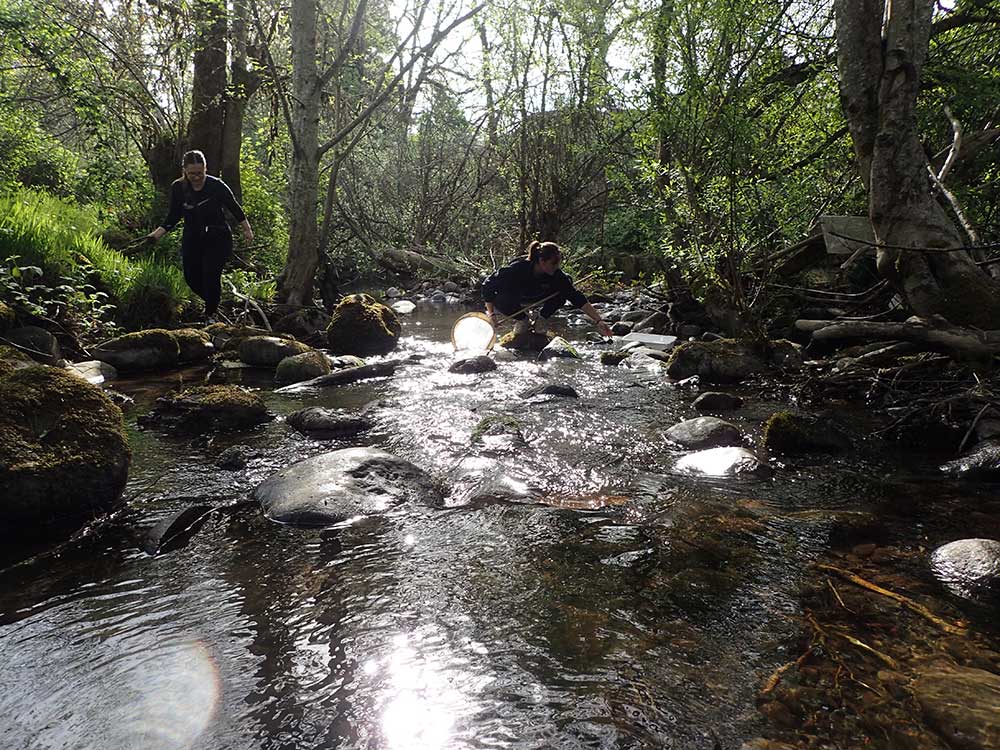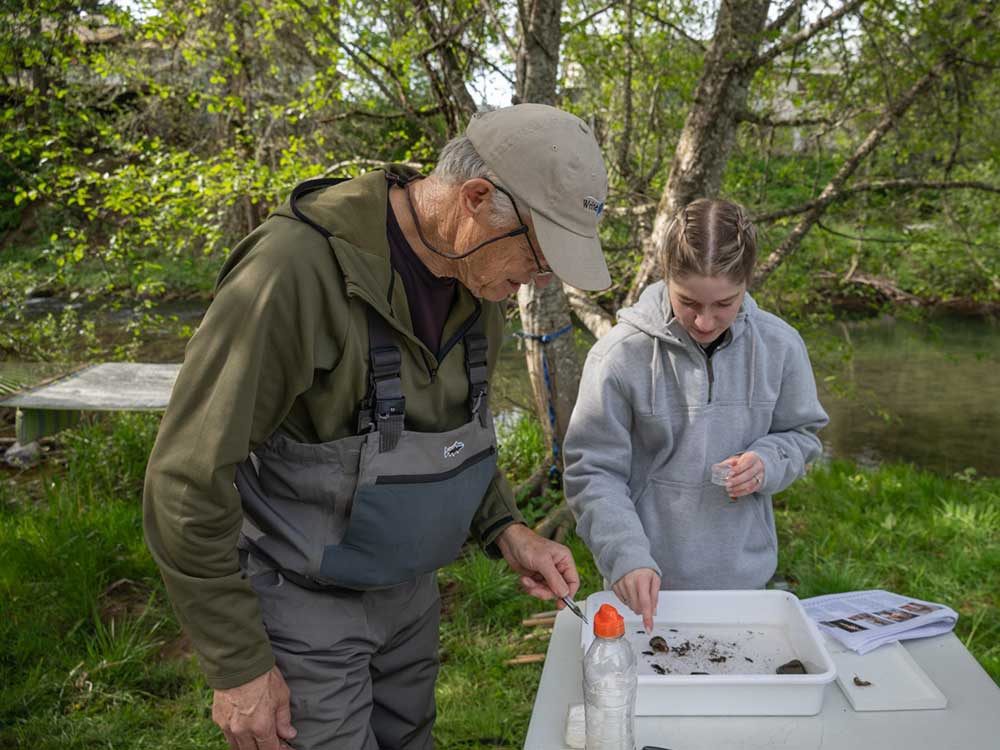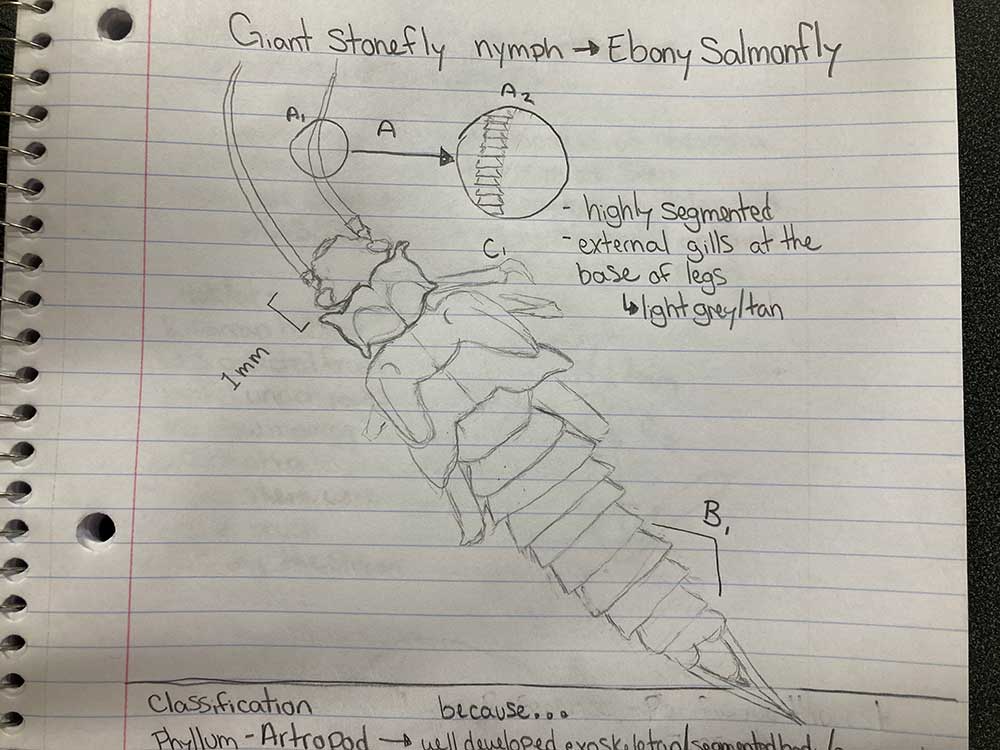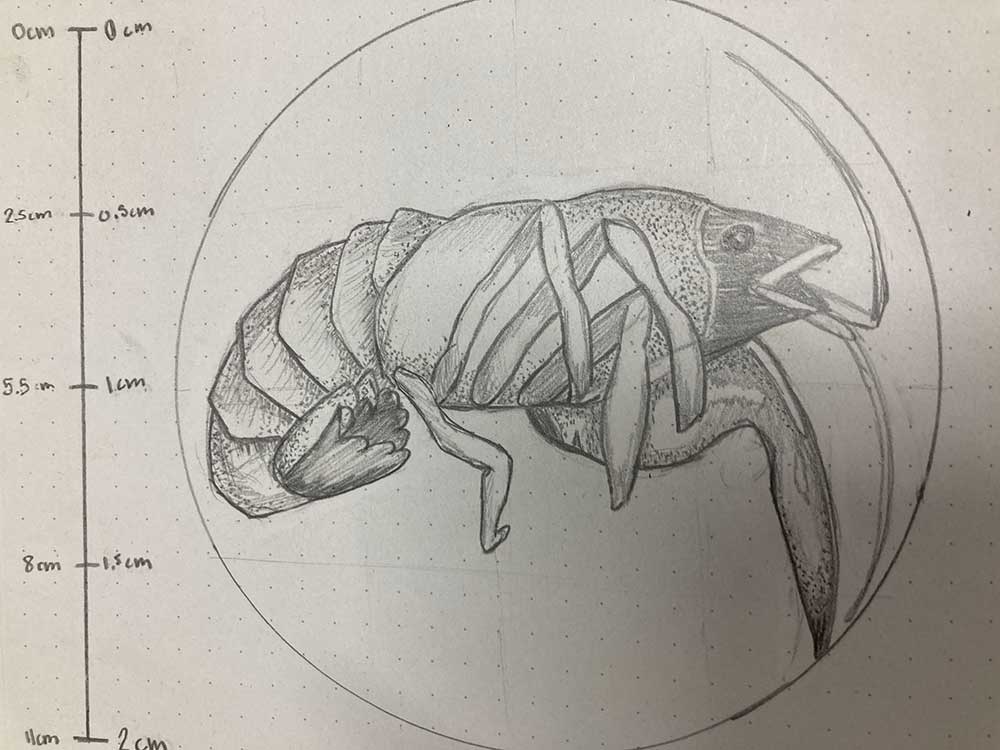Projects & Field Notes
Photo by Richard Bunse
Write Place Joins the Great Willamette Cleanup
Jordan Horrell directed activities from North Riverside Park in Independence. “We had an amazing turnout,” reported Horrell. “We cleaned up our local waterway and prevented so much trash—850 pounds, plus a few tires—from entering the river this winter.”
Oregon park ranger, Mike Hoffmann, and local resident, Gordon McLennan, ferry trash off the east bank of the Willamette River near Independence.
The team was also supported by Oregon State Parks Department ranger, Mike Hoffmann, who piloted his skiff to access areas on the river’s east bank. “We all need to be river stewards,” Ranger Hoffmann said. “Activities like this help us do our part to maintain clean and safe water.”
Luke Stuntz, a coordinator for Willamette Riverkeeper, was “tremendously grateful to have the WOU community involved.” He described the “extremely collaborative nature of this stewardship event” and how it “reminds us that diverse communities across the region are connected by our shared love for the river and by a responsibility to actively protect its natural resources.” At this October’s event, more than 10,000 pounds of trash were removed from Willamette’s riparian zone.
Willamette Riverkeeper site director, Jordan Horrell (left), and retired WOU professor, Chloe Hughes, dig out a discarded tire.
Jordan Horrell directed activities from North Riverside Park in Independence. “We had an amazing turnout,” reported Horrell. “We cleaned up our local waterway and prevented so much trash—850 pounds, plus a few tires—from entering the river this winter.”
The team was also supported by Oregon State Parks Department ranger, Mike Hoffmann, who piloted his skiff to access areas on the river’s east bank. “We all need to be river stewards,” Ranger Hoffmann said. “Activities like this help us do our part to maintain clean and safe water.”
Luke Stuntz, a coordinator for Willamette Riverkeeper, was “tremendously grateful to have the WOU community involved.” He described the “extremely collaborative nature of this stewardship event” and how it “reminds us that diverse communities across the region are connected by our shared love for the river and by a responsibility to actively protect its natural resources.” At this October’s event, more than 10,000 pounds of trash were removed from Willamette’s riparian zone.
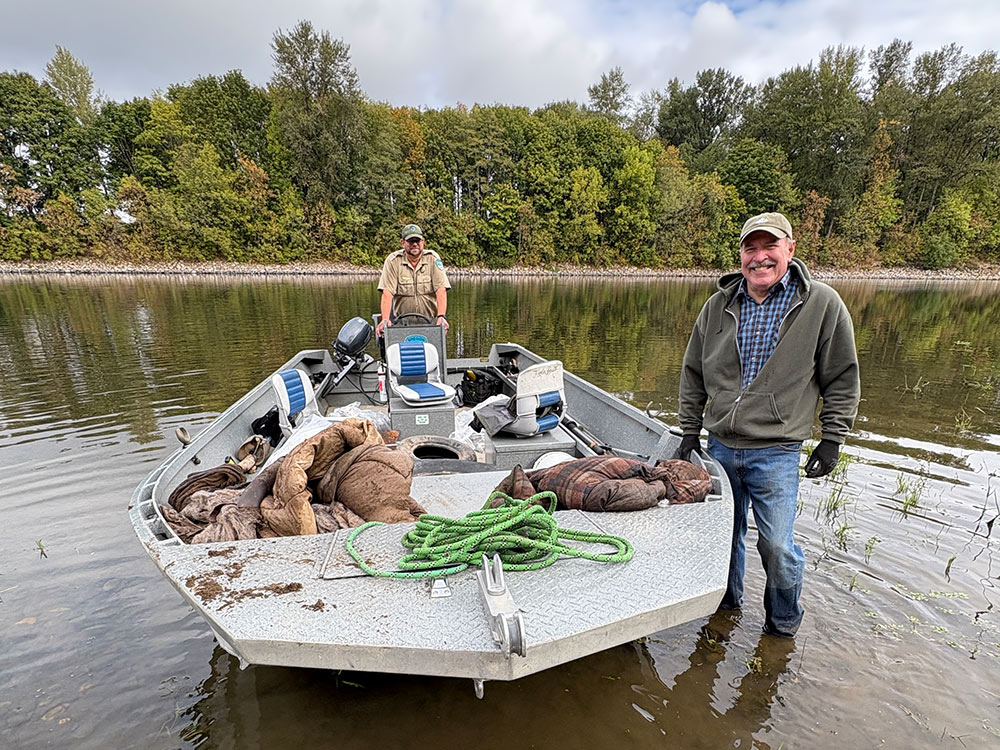
Oregon park ranger, Mike Hoffmann, and local resident, Gordon McLennan, ferry trash off the east bank of the Willamette River near Independence.
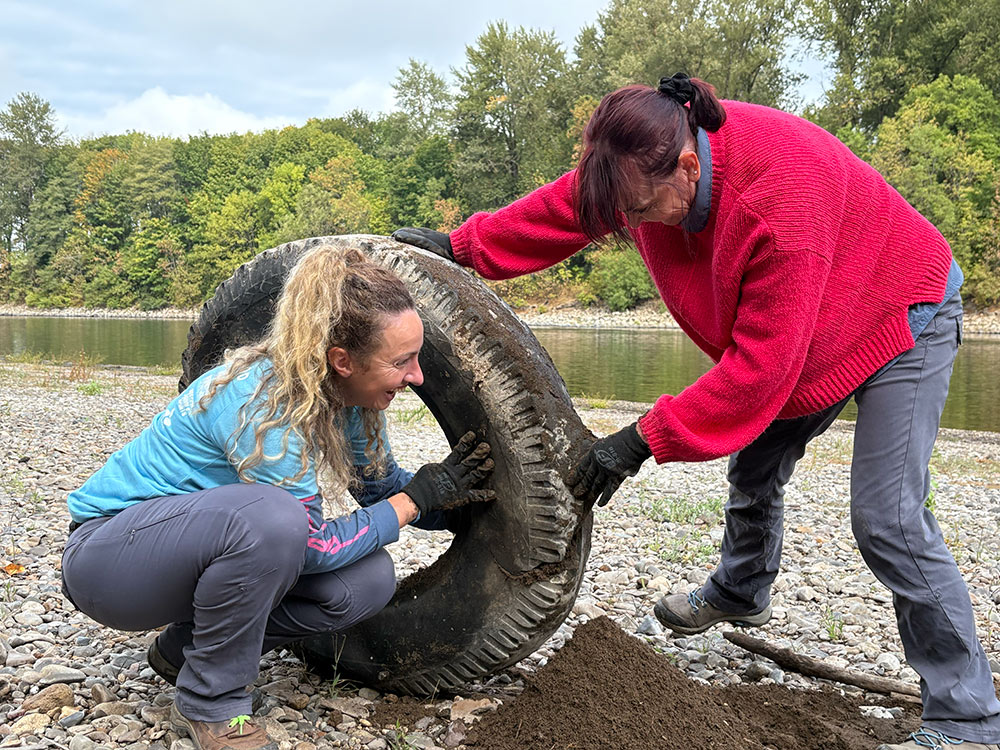
Willamette Riverkeeper site director, Jordan Horrell (left), and retired WOU professor, Chloe Hughes, dig out a discarded tire.
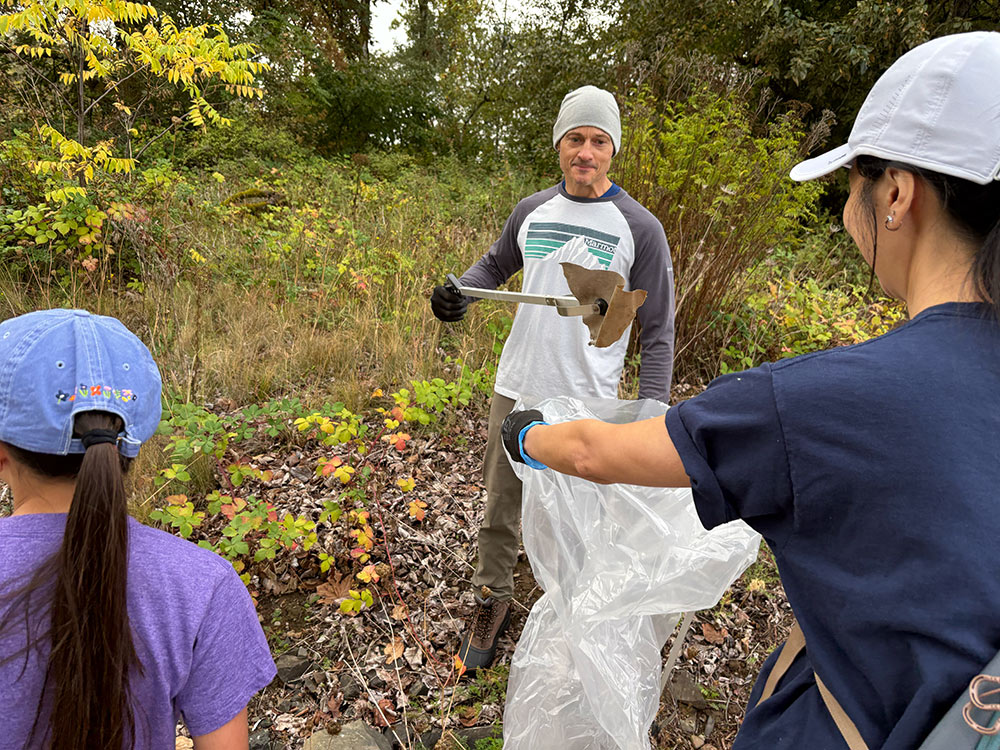
WOU English professor, Rob Troyer, and his family pick up garbage near the Independence boat ramp.
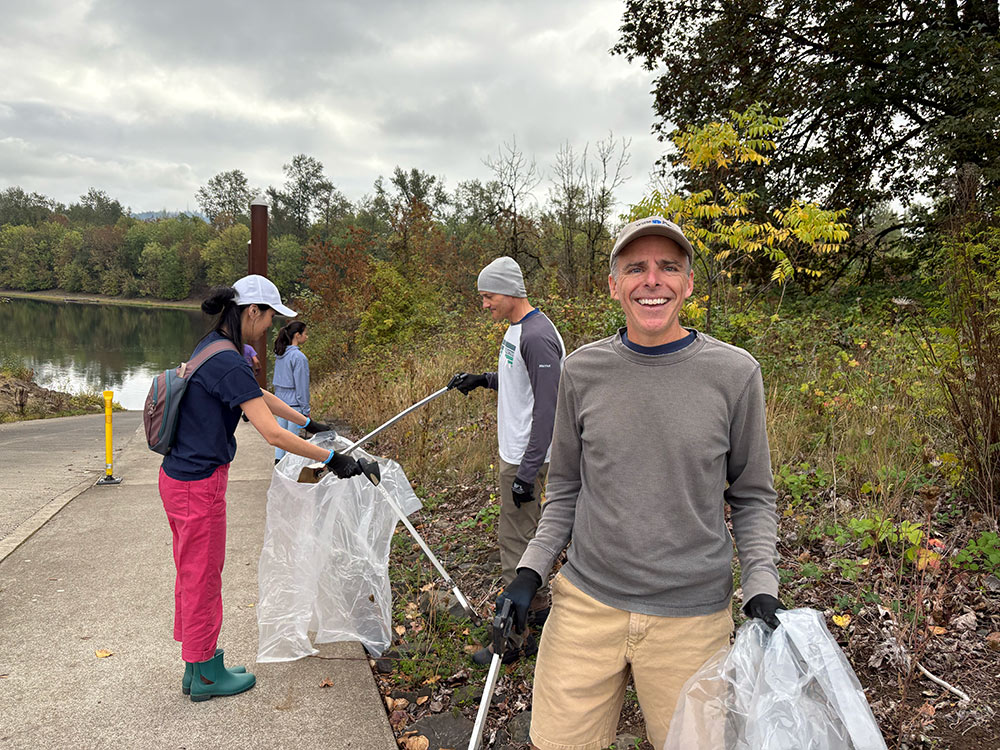
WOU biology professor, Michael Baltzley, thanked Write Place, “for the email nudge that got me out of the house to join the cleanup.” Write Place thanks Mike and the WOU community for helping with the project.
In the Stream with WOU’s Invertebrate Zoology Class
Write Place board member and resident entomologist, Rich Hafele, joined WOU biology professor, Michael Baltzley, and his Invertebrate Zoology class for a field lab on the Little Luckiamute River in Falls City, Oregon, on April 23, 2024.
Wading into clear, cold water with fine mesh nets, students gathered specimens ranging from stoneflies, caddisflies and various mayfly nymphs to juga snails and signal crayfish. “The diversity and abundance of aquatic invertebrates at this site indicate a healthy river ecosystem,” remarked Professor Hafele, who worked for over twenty years as a biologist and water monitoring specialist for the Oregon Department of Environmental Quality. Students also collected and released fish species, including cutthroat trout, speckled dace, and sculpin.

Professor Mike Baltzley (top) and entomologist Rick Hafele assist students in identifying collected specimens.

Entomologist Rick Hafele works with WOU students (clockwise from the bottom left) Brooke
Belluomini, Lexus Walk, Alexandra Harman, Maximus Sing, and Autumn Beck.
“It’s a super-cool experience,” said Lexus Walk, an Aquarium Science major at WOU. “It’s great to get into the stream, collect these animals, and look at them closely. You can see the way they crawl, swim and breathe.”
Professors Hafele and Baltzley helped students identify many species, and they discussed the evolution, life cycles, and roles of those organisms in the stream’s ecosystem.
“When you’re in the field,” emphasized Professor Baltzley, “you see life as it actually exists. It gives you the context, the bigger picture, and that’s very important.”
Another Aquarium Studies student, Maximus Sing, asserted that “You just can’t get this from a textbook or PowerPoint. You learn differently through the act of discovery. It’s real. I’ll never forget this stuff.”

Entomologist Rick Hafele works with WOU students (clockwise from the bottom left) Brooke
Belluomini, Lexus Walk, Alexandra Harman, Maximus Sing, and Autumn Beck.
Write Place board member and resident entomologist, Rich Hafele, joined WOU Biology Professor, Michael Baltzley, and his Invertebrate Zoology class for a field lab on the Little Luckiamute River in Falls City, Oregon, on April 23, 2024.
Wading into clear, cold water with fine mesh nets, students gathered specimens ranging from stoneflies, caddisflies and various mayfly nymphs to juga snails and signal crayfish. “The diversity and abundance of aquatic invertebrates at this site indicate a healthy river ecosystem,” remarked Professor Hafele, who worked for over twenty years as a biologist and water monitoring specialist for the Oregon Department of Environmental Quality. Students also collected and released fish species, including cutthroat trout, speckled dace, and sculpin.
“It’s a super-cool experience,” said Lexus Walk, an Aquarium Science major at WOU. “It’s great to get into the stream, collect these animals, and look at them closely. You can see the way they crawl, swim and breathe.”
Professors Hafele and Baltzley helped students identify many species, and they discussed the evolution, life cycles, and roles of those organisms in the stream’s ecosystem.
“When you’re in the field,” emphasized Professor Baltzley, “you see life as it actually exists. It gives you the context, the bigger picture, and that’s very important.”
Another Aquarium Studies student, Maximus Sing, asserted that “You just can’t get this from a textbook or PowerPoint. You learn differently through the act of discovery. It’s real. I’ll never forget this stuff.”

Professor Mike Baltzley (top) and entomologist Rick Hafele assist students in identifying collected specimens.
WOU students, Amaya Palacios (left) and Lilia Chapman collect specimens from the Little Luckiamute River in Falls City.
WOU students, Amaya Palacios (left) and Lilia Chapman collect specimens from the Little Luckiamute River in Falls City.
Entomologist Rick Hafele examines a tray of aquatic invertebrates with WOU student, Samantha Bailey.
Entomologist Rick Hafele examines a tray of aquatic invertebrates with WOU student, Samantha Bailey.
Lilia Chapman’s lab illustration of a giant stonefly collected from the Little Luckiamute River.
Lilia Chapman’s lab illustration of a giant stonefly collected from the Little Luckiamute River.
Projects with the Luckiamute Watershed Council
Write Place has partnered with the Luckiamute Watershed Council. The Luckiamute River, named after the band of Kalapuya Indians that lived along its shores, is an important tributary of the Willamette River. We urge our readers to learn more about the Luckiamute Watershed Council and support their efforts to “engage and assist landowners and communities in the voluntary protection, restoration and enhancement of the Luckiamute and Ash Creek watersheds.”
